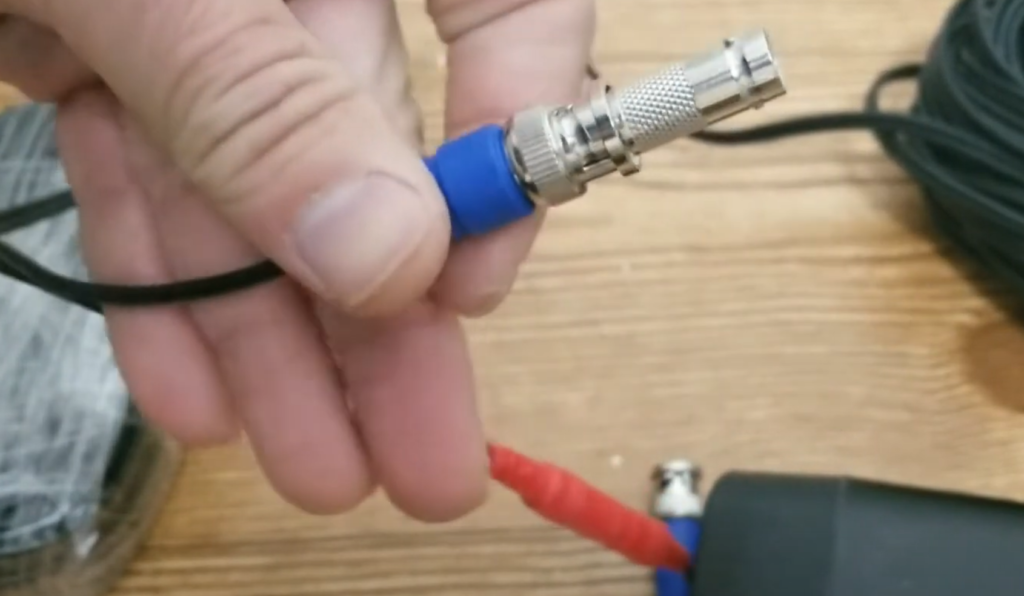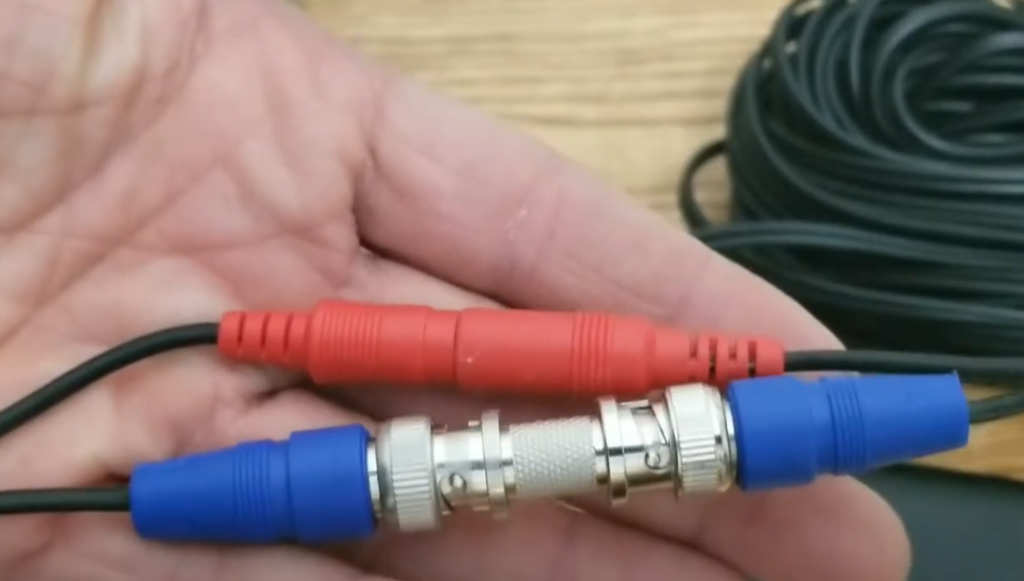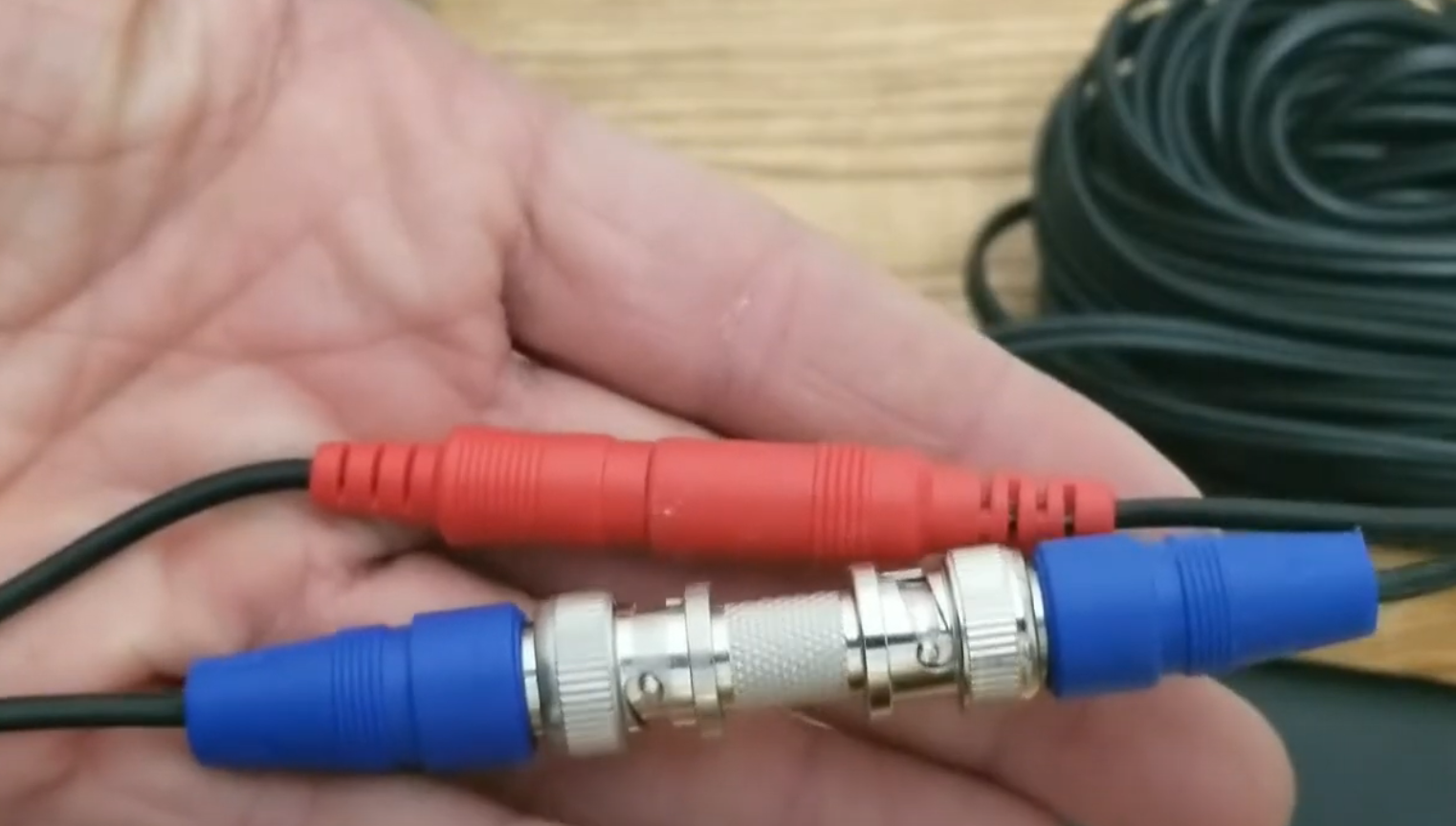Do you have your security camera system set up but find that your cables don’t reach as far as you want? It’s a relatively common issue, and thankfully, the solutions are not difficult to find.
In this how-to guide, we’ll go over how to extend security camera cables by using BNC connectors and how to splice two BNC cables together.
Both of these methods will vastly improve how much cable length you have to work with, and more cable length just means more potential setups for your security system. So, read on to learn how to extend your security camera’s cable length with easy-to-follow steps!
How to Extend Security Camera Cables with BNC Connectors
For this method, you will need the following items:
- CCTV Camera
- BNC Female to Female Adapter/Connector
- CCTV Extension BNC Cable Video & Power Lead

To extend your security camera cables with BNC connectors, start by ensuring that your initial camera system is working correctly. Otherwise, you will have to do the camera setup and cable extension processes at the same time.
Once you have your camera ready to go, disconnect its signal first and then the power. Next, you’ll need to connect your BNC connectors to the proper sockets of your camera’s cable.
If your sockets are colored red, white, and yellow, follow this connection pattern:
- BNC Female to Female audio adapter connects to the white socket.
- BNC Female to Female signal adapter connects to the yellow socket.
After making the proper connections, take one end of your extension cable and connect them to the adapters. Once again, you will have to follow a specific connection pattern.
In this case, connect red to red, yellow to yellow, and white to white.
Now you can take the other end of your extension cable and directly connect the audio and signal to the CCTV camera. The camera should then function normally, but you’ll have a much longer reaching cable that gives you more flexibility with camera placement!

How to Extend Security Camera Cables By Splicing
For this method, make sure you have the following items:
- CCTV Camera
- CCTV Extension BNC Cable Video & Power Lead
- Electrical Butt Terminals
- A knife or other sharp tool for precision cutting
If you don’t want to use BNC connectors to extend the length of your security camera’s cable, then splicing cables together is another option worth trying.
Splicing is a bit more complicated than using extenders, but with a bit of practice, you might wind up preferring splicing for the added control that it gives you.
To splice two BNC cables together, remove the covering over the wires by using something small and sharp. A knife or some other tool that offers good precision is preferable for this part, as you don’t want to cut the wires by accident, and more importantly, you don’t want to cut yourself accidentally.
Once you’ve entirely removed the covering, you’ll see an inner and outer wire woven together, along with some insulation. Bring these two wires out of the cable but be careful not to damage them in the process.
Now that you have the wires free, the center wire needs to be free of insulation, so carefully cut the insulation away until there is as little as possible around the wire.
Follow the same steps for the second cable that you want to use in the splicing process.
At this point, crimping the wires together and using a butt connector is recommended, especially if you don’t have the necessary tools for soldering wires together.
Just remember to color match the wires when you connect them. Typically, red wires connect with other red wires, and the same goes for black wires. If you have wires that are not red or black, still match them accordingly. Otherwise, you might cause a short circuit that could ruin the whole process.
Once this final step is complete, test out your security camera and see how it functions with the new cable extension setup.
Final Thoughts
While it may seem like a difficult task initially, extending security camera cables is far from the most sophisticated process in the world.
Splicing does take a reasonable amount of preparation and a good pair of hands, but you’ll likely have it down to a system of your own after doing it a few times.
And if you aren’t a fan of getting your hands dirty, the BNC connectors are the perfect alternative, and they don’t cost you that much in terms of the extra cable length they provide. They simply don’t offer the same level of control as splicing does.
Whether you opt for splicing or BNC connectors, both methods will give you a satisfactory result. Follow the steps in this how-to guide, and you will have yourself some nicely extended security camera cables in practically no time at all!

